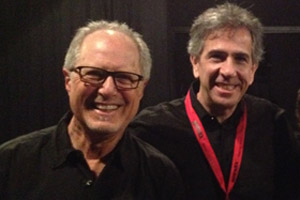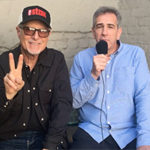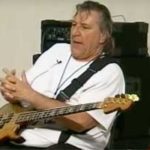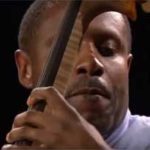Renowned studio musician shares music biz insights
By David Sands
June 10, 2015
Bob Glaub may be a veteran sideman and a staple of the L.A. session scene, but he’s also a pretty humble guy.
In conversation, he’s quick to talk up other musicians’ accomplishments. This modesty, however, belies his own considerable talent and the fact that he’s played bass with a roster of artists that’s simply jaw-dropping: Bruce Springsteen, Donna Summer, Bob Dylan, Linda Ronstadt, and Journey to name a few; Leann Rimes and Steven Tyler to name a few in the last couple months.
Readers can also hear his work on Ron Sexsmith’s new Album, Carousel One. From 1978 to 1989, he toured the world as Jackson Browne’s bassist, too. After a 25-year hiatus, they’re now reunited and in the midst of a multi-country tour.
FBPO’s Jon Liebman recently caught up with the music industry vet to get the inside story of his career, the tools of his trade and his advice to up-and-coming bassists.
Although he originally hails from New York, Los Angeles served as the backdrop to Glaub’s childhood. The son of Eastern European immigrants, he grew up listening to a mix of traditional Jewish, Hungarian Romani and Top 40 music. His youthful love of rock and roll inspired him to buy a drum set with a brother and later led to him to the bass.
In junior high, a bunch of his neighborhood pals formed a garage band. Together they owned a saxophone, two guitars, drums and a dime store organ. No bass, though. Knowing nothing about the instrument, the 13-year-old Glaub asked to join if could get his hands on one, and they agreed. With his father’s assistance, he bought a bass and amp through the classifieds.
Eager to rock out at local dances and bar mitzvahs, he took a crash course on the bass at a neighborhood music shop specializing in band instruments and classical music.
“There was a guitar teacher there, and he wrote me a diagram of the neck and all the notes on it,” he says. “I made it my business to memorize all the notes.”
At first, Glaub modeled himself on the Animals’ Chas Chandler. Later, Paul McCartney and Bill Wyman of the Stones helped shape his developing style, as did most of the English and American bands of that era.
Record credits weren’t really a thing in the early Sixties, so at the time he didn’t really know the identities of many of the bassists showing him the way forward. Backing musicians like Carol Kaye, Ray Pohlman, Chuck Rainey, Jerry Jemmott, David Hood, Leroy Hodges, Donald “Duck” Dunn, Bob Babbitt and James Jamerson weren’t household names back then, but he acknowledges his musical debt to them.
Jazz bassists Paul Chambers and Ron Carter also made an impression as he strummed through high school jazz band. Later still, Jamaican bassists like Aston Barrett and Jackie Jackson also made their mark.
During high school, he gigged with another band of pals, but his first real taste of the music biz came in junior college. One day during finals week, he got an unexpected call from a drummer friend touring with a lounge singer named Leland Scott.
They needed a bassist, pronto, so Glaub dropped out of school to play the casino circuit with them. At first, the constant gigging intoxicated him. After about six months, though, Glaub decided he wanted more out of life and returned to L.A.
Through some buddies, he befriended Jesse Ed Davis, a professional guitarist who worked with Taj Mahal and Jackson Browne. Their friendship proved fortuitous when Davis ran into trouble recording his solo album, Keep Me Comin’. The bass player still remembers their telephone conversation.
“I had never played with him,” Glaub says. “He had just heard me play. He said, ‘Get your bass. Get in the car. Get down to Paramount Studios. I need you!’”
Another bassist had fallen through, and Davis needed Glaub’s help. Impressed, the guitarist started sending work his way. Roughly six months later, Glaub found himself recording with none other than John Lennon. Although he’s had his ups and downs, this early work paved the way to his playing with everyone from Aaron Neville to Warren Zevon.
Over the last few decades, he’s also had the good fortune to assemble a collection of nearly 60 basses. Glaub recently retired his favorite P-bass, a rosewood-necked 1959 Fender “Mary Kaye” that he’s been playing on the road with Browne. In its place, he’s substituting a US-made Fender 1963 P-bass reissue he bought off a friend.
“It’s a fabulous bass,” he says. “I just started playing it a few weeks ago, and I’m in love with that thing.”
Lakland, which makes his signature bass, is also well represented on tour. He uses two of their P-basses and brings along a Lakland Short Scale Hollow body for hotels and sound checks. He also travels with a Kala U-Bass.
While Glaub strings few of his basses with Pyramids and D’Addarios, La Bella’s been his favorite brand for nearly 35 years.
“I use their strings primarily,” he says. “I couldn’t do what I do without them.”
As for rigs, on the road he relies on a half stack Ampeg SVT with a 4×10 cabinet and switches off between a SVT VR head and SVT Pro head. When he wants amplification in the studio, an Acoustic B15 and a James Demeter VTBP-M-800D do the job for him.
While top-notch equipment certainly plays an important part in upping a musician’s performance, there’s a lot more to making it than great gear. Glaub’s chief advice to up-and-coming bassists is quite straightforward.
“I’d say just do anything you can. Don’t say no to anything, really,” he says. “It can lead to other work. You meet one person, hit it off and suddenly somebody’s recommending you.”
In his younger years, Glaub attended jam sessions at blues clubs. He still thinks jamming with other musicians is a wise way to make connections. Versatility opens a lot of doors as well. To this end, the session veteran suggests practicing a wide range of different styles and genres. Another tip is bringing the right attitude into the recording booth.
“If you’ve got a gig to play, even a low budget record, somebody’s hired you to play,” he says. “This is their life and their future and their whole world. To bring a bit of levity, a little humor and good-naturedness, to lighten up the situation can really go a long way.”
According to Glaub, a home studio is a smart investment too, because it makes it easy to assemble a body of work and record tracks on demand with little fuss.
As for his own career, he’s content being a sideman and doesn’t dwell on days gone by.
“I don’t look back ever on what I’ve accomplished. I like to just be in the moment. Whatever path that leads me on. If that leads me to band, or I just keep playing with the same people or different people all the time, so be it,” says Glaub. “I’m very fulfilled.”






Good interview. Did he even mention how long he played with Bonnie Raitt? He was great with her.
I’m sorry about my last comment.I was thinking of “Hutch”
Hutchinson who plays with Bonnie.
Sorry about that
Bob Glaub is a great one too!